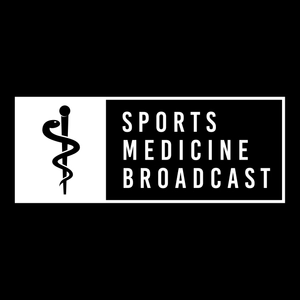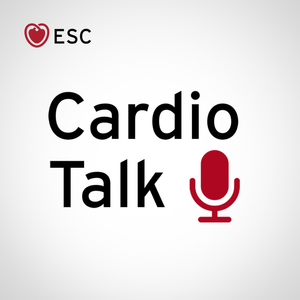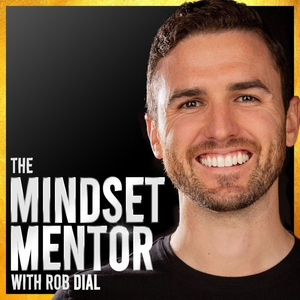
Backboarding the Injured Athlete
02/21/24 • 16 min
Backboarding the injured athlete is an ever-evolving skill. Dr. Matt Camarillo discusses it live at the Memorial Hermann Sports Medicine Update
How common are spinal cord injuries?
-9-10% of injuries are spinal. About 12,000 nationally.
Looking at physicals I have a couple of athletes with previous spinal cord injuries. What are some of the things that I should be more aware of when taking care of these athletes?
-Usually due to trauma or born with cervical stenosis.
-Should have a spine surgeon associated with the athletic population
We talk about spinal cord injuries, and the first thing we think about is football. We think that it is equipment-heavy and collision-based and talk about equipment removal for that. But what is the instance in other sports?
-Happens in lacrosse, gymnastics, hockey, soccer, baseball, and basketball.
-Helmet and shoulder pads keep them in alignment then leave it on.
-If only a helmet probably needs to come off.
These spinal cord injuries, I believe you mentioned there are about 12,000 injuries per year. Are these spinal injuries with awareness in education are we increasing these or decreasing these?
-Since 1975 they have gone down.
-A lot of spinal injuries come from automobile accidents.
Is there a reason for that?
-Awareness, and if it goes away the numbers will go up again.
Moving back into narrowing down into more of an athletic training setting when working with sport athletes for example what would be our initial assessment and what would be some red flags to actually move the person onto a spine board?
-Big trauma like a head-on hit you want to be careful.
-Clinical judgment.
-numbness bilaterally
The athlete just has a lot of pain.
-Trust your gut
So once you decide to stabilize someone, I know you talked about two methods to stabilize, but what is your preferred method?
-6 man lift
-If you don’t have enough hands, nobody will fault you for doing a log roll.
When is it appropriate to move the neck into neutral?
-It is always ok as long as you do the head or trap squeeze.
-You want to make sure you have access to the airway.
Can you talk a little bit about the difference between a head or trap squeeze?
– head squeeze is more about putting you hands around the athletes head or helmet
-trap squeeze where you are putting your thumbs and finger around someone’s traps and gives you more stability because you also have to add in the fatigue factor.
-Trap squeeze is more stable
Be aware that clothing could cause you to slip while holding a helmet.
I think it comes down to practice and figuring out how everything works. Because once you get it down, then when all that emotion going, if you practice over and over again it just becomes a routine.
What are some tips you have for someone who is working with an equipment-intensive sport, like hockey, that they are not familiar with the equipment?
-Practice
-Use equipment managers to become familiar with equipment.
What does it look like once they are at the hospital?
-equipment removal and go into a cervical collar.
-Then straight to a CT scan is #1.
-Transport to a level 1 hospital because you don’t want to have to move to multiple locations.
Can you talk about differences between places that have stopped using spine boarding techniques like in motorcycle accidents?
-Two different mechanisms and two different thoughts.
-Make sure everyone is on the same page
-You can always ask to talk to a supervisor because these are generally big EMS areas and you can’t control what everyone does.
Can you talk about the order you take the piece off of the helmet?
-Side pieces off first. Allows to flip and gives access to the airway
CPR with shoulder pads. With a spinal cord injury and you are having to do CPR and you are removing the equipment, you would leave the shoulder pads in place as long as you open them up?
-Open them
-If getting into CPR take them off because it has become life-threatening.
Do you have any recommendations for an AT who does not have a lot of volunteers or staff and might be working alone?
You have coaches. Train the coaches. ...
Backboarding the injured athlete is an ever-evolving skill. Dr. Matt Camarillo discusses it live at the Memorial Hermann Sports Medicine Update
How common are spinal cord injuries?
-9-10% of injuries are spinal. About 12,000 nationally.
Looking at physicals I have a couple of athletes with previous spinal cord injuries. What are some of the things that I should be more aware of when taking care of these athletes?
-Usually due to trauma or born with cervical stenosis.
-Should have a spine surgeon associated with the athletic population
We talk about spinal cord injuries, and the first thing we think about is football. We think that it is equipment-heavy and collision-based and talk about equipment removal for that. But what is the instance in other sports?
-Happens in lacrosse, gymnastics, hockey, soccer, baseball, and basketball.
-Helmet and shoulder pads keep them in alignment then leave it on.
-If only a helmet probably needs to come off.
These spinal cord injuries, I believe you mentioned there are about 12,000 injuries per year. Are these spinal injuries with awareness in education are we increasing these or decreasing these?
-Since 1975 they have gone down.
-A lot of spinal injuries come from automobile accidents.
Is there a reason for that?
-Awareness, and if it goes away the numbers will go up again.
Moving back into narrowing down into more of an athletic training setting when working with sport athletes for example what would be our initial assessment and what would be some red flags to actually move the person onto a spine board?
-Big trauma like a head-on hit you want to be careful.
-Clinical judgment.
-numbness bilaterally
The athlete just has a lot of pain.
-Trust your gut
So once you decide to stabilize someone, I know you talked about two methods to stabilize, but what is your preferred method?
-6 man lift
-If you don’t have enough hands, nobody will fault you for doing a log roll.
When is it appropriate to move the neck into neutral?
-It is always ok as long as you do the head or trap squeeze.
-You want to make sure you have access to the airway.
Can you talk a little bit about the difference between a head or trap squeeze?
– head squeeze is more about putting you hands around the athletes head or helmet
-trap squeeze where you are putting your thumbs and finger around someone’s traps and gives you more stability because you also have to add in the fatigue factor.
-Trap squeeze is more stable
Be aware that clothing could cause you to slip while holding a helmet.
I think it comes down to practice and figuring out how everything works. Because once you get it down, then when all that emotion going, if you practice over and over again it just becomes a routine.
What are some tips you have for someone who is working with an equipment-intensive sport, like hockey, that they are not familiar with the equipment?
-Practice
-Use equipment managers to become familiar with equipment.
What does it look like once they are at the hospital?
-equipment removal and go into a cervical collar.
-Then straight to a CT scan is #1.
-Transport to a level 1 hospital because you don’t want to have to move to multiple locations.
Can you talk about differences between places that have stopped using spine boarding techniques like in motorcycle accidents?
-Two different mechanisms and two different thoughts.
-Make sure everyone is on the same page
-You can always ask to talk to a supervisor because these are generally big EMS areas and you can’t control what everyone does.
Can you talk about the order you take the piece off of the helmet?
-Side pieces off first. Allows to flip and gives access to the airway
CPR with shoulder pads. With a spinal cord injury and you are having to do CPR and you are removing the equipment, you would leave the shoulder pads in place as long as you open them up?
-Open them
-If getting into CPR take them off because it has become life-threatening.
Do you have any recommendations for an AT who does not have a lot of volunteers or staff and might be working alone?
You have coaches. Train the coaches. ...
Previous Episode

Protect3D – 3D Printed Braces
Protect3D joins medicine and technology to help Athletes return to the sport safer and maybe faster. Kevin Gehsmann joins me to share their story and how Athletic Trainers can get their athletes braced.
Where did the idea come from?
Engineering student
Liked 3D printing
Daniel Jones, the quarterback at Duke, went down with a clavicle fracture. They decided their engineering project would help Daniel and other elite athletes needing protection.
Customized for his unique needs and ROM
What has been the most difficult hurdle for Protect3d?
In the early days, we were recognized by the NFL and won $50,000 and Superbowl tickets.
The pandemic caused a lot of challenges.
Every device we make has a positive impact on the athlete and their performance
Share a success story you enjoy.
Clavicle pads reduce the risk of re-injury and increase the confidence of the player and health care team.
It is also the original pad or brace that birthed the idea.
Outside of your own clinics where have you had doctors adapting this style of bracing?
We started with elite athletes and have worked with orthopedic surgeons and athletic trainers.
An ankle/foot orthotic is a new brace to help with foot drop.
We had a D1 athlete participate in games with a Protect3D brace for foot drop.
What do you see as a hurdle for secondary setting adoption of Protect3d braces?
The cost of the product is one hurdle.
Setting up a system for billing on demand can be an obstacle as well.
Are these braces something that could be printed on your everyday, at-home printer?
Due to the material, printer, and the need to control different variables as a medical device, they are not currently printed at home devices.
There may be options in the future as we grow and develop.
Want to test out Protect3D?
Have an athlete needing a brace?
Willing to give me your honest feedback on the podcast?
Send me an email and maybe follow it up with a social media post.
Give me the story (protect patient privacy)
If it works out then we will collaborate to get you a custom 3D-printed brace for your athlete.
Next Episode

SUJI BFR – Michael MacPherson
SUJI Blood Flow Restriction or BFR is changing the game with its AI-powered app. Dr. Michael MacPherson joins me and Lisette Guerrero to learn more about our new gear.
What is your 10-second sales pitch for Suji BFR?
A portable, affordable, and easy-to-use gold standard, AI-powered BFR technology
The affordability of the device is one reason we chose to add Suji BFR. Discuss current pricing.
Suji has found the middle ground. We are data-driven for incredible accuracy at an affordable price, never before seen in the BFR space.
Let’s get into the app, it is one of the big differences from the Delphi unit we have.
Our AI-powered app automatically calculates LOP for the clinician and then saves that data to a patient/athlete profile, saving at least 3-5 minutes every BFR session. The AI-powered calibration process is also incredibly robust.
All patient/athlete data is stored in a HIPAA-compliant cloud that lives in your institution. A Suji institution is your team or clinic where all your Data lives. Only you have access to it as the administrator. With Suji, you only have to calibrate as often as you deem necessary.
Discuss the continuous monitoring vs the detachable hose.
With Suji Pro and its real-time pressure adjustments, you won’t need to attach the hose to adjust the pressure within the cuff.
With Suji Pro, you’ll be able to adjust the pressure on the pump in real-time.
Suji BFR Pro – what should we expect? Suji Pro is Lighter, Smaller, and Hoseless.
Our users are passionate about our portability and our customizable in-app recovery sessions so we’ve made advancements in both areas. Our users also expressed the desire for real-time pressure control without attaching hoses and a pump, so you can expect greater control with Suji Pro without breaking the bank.
Contact Us: Contact Us
Michael MacPherson – [email protected]
Lisette Guerrero
Support the podcast sponsors
Frio Hydration – Superior Hydration products.
Donate and get some swag (like Patreon but for the school)
HOIST – No matter your reason for dehydration DRINK HOIST
MedBridge Education – Use “TheSMB” to save some money, be entered in a drawing for a second year free, and support the podcast.
Marc Pro – Use “THESMB” to recover better.
Athletic Dry Needling – Save up to $100 when registering through our link.
If you like this episode you’ll love
Episode Comments
Generate a badge
Get a badge for your website that links back to this episode
<a href="https://goodpods.com/podcasts/sports-medicine-broadcast-290872/backboarding-the-injured-athlete-45267556"> <img src="https://storage.googleapis.com/goodpods-images-bucket/badges/generic-badge-1.svg" alt="listen to backboarding the injured athlete on goodpods" style="width: 225px" /> </a>
Copy




